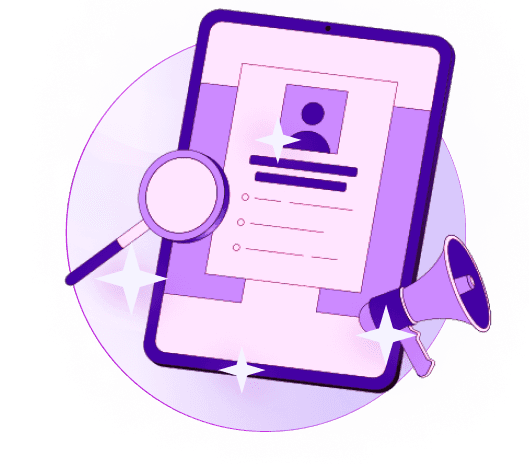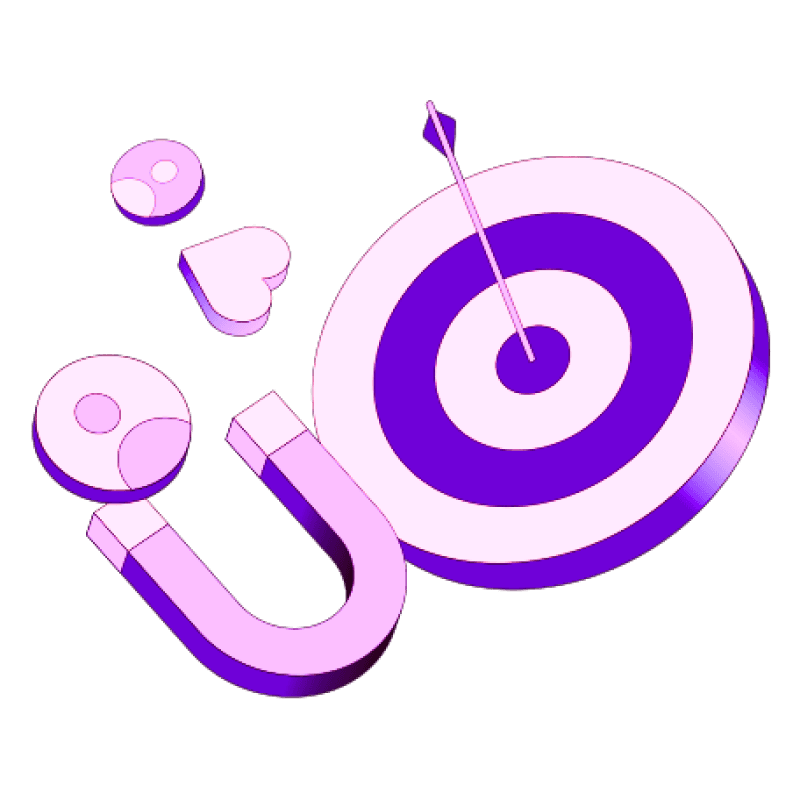Blogs
Articles

How to Automate Inbound Lead Enrichment: A Simple Step-by-Step Guide
Businesses lose about 20% of their sales because of poor lead quality. Companies spend $50 billion on marketing technologies, yet 87% of their marketing databases sit unused.
The numbers paint an even more worrying picture. Half of your potential customers will pick the first vendor that gets back to them. Quick follow-ups become tough when your lead data isn't complete or accurate. Your lead data's quality drops by 20-25% each year.
Automated inbound lead enrichment has become a vital part of sales success. About 75% of businesses see it as a deciding factor. The right lead enrichment tools and software can help you build an uninterrupted lead generation workflow. This workflow captures, improves, and uses prospect data the right way.
Let us show you how to build an automated enrichment system that can boost your lead conversion rates by 25%. We'll walk you through everything - from picking the right enrichment tools to connecting them with your CRM. This guide will help you change your inbound lead management process.
Understanding Inbound Lead Enrichment
Lead enrichment forms the foundation of successful inbound marketing strategies. The process offers remarkable value to businesses that want to maximize their conversion rates.
What is lead enrichment and why it matters?
Lead enrichment collects, manages, and analyzes data about customer interest in your product or service. The process adds to simple lead information like name and email with practical prospect profiles that help make better decisions.
Research shows 58% of businesses face accuracy problems with their data. Poor data quality affects sales performance because teams waste time contacting outdated leads or mismatched prospects. Proper enrichment helps businesses boost conversion rates by 25% and reduce customer acquisition costs by 15%.
Types of data used in enrichment
Several data categories play a vital role in complete lead enrichment:
Contact data: Simple information like phone numbers and email addresses
Firmographic data: Company details including size, industry, revenue, and location
Demographic data: Personal characteristics such as job title, seniority, and education
Technographic data: Technology stack and tools the company uses
Behavioral data: Website visits, content downloads, and engagement patterns
Intent data: Signals showing purchase readiness and interest level
Geographic data: Location-based information for regional targeting
Each data type helps qualify and prioritize prospects uniquely. To cite an instance, firmographic data helps target companies matching your ideal customer profile, while behavioral data shows where prospects are in their buying trip.
Manual vs. automated enrichment
Manual enrichment updates customer records by hand. While this method provides control, it has major drawbacks. Sales teams dedicate about 21% of their time to data entry and management. This time could be better spent involving customers.
Automated enrichment uses software and algorithms that update lead data live from multiple sources. This method saves time and reduces human error rates, which can reach 30% with manual processes.
Automated solutions provide clear benefits through consistent data quality and immediate enrichment upon lead capture, especially for growing businesses.
Preparing for Automation
You need solid groundwork to automate inbound lead enrichment. Your automation success depends on spotting gaps in your current setup, picking the right tools, and getting your systems ready for integration.
Identifying gaps in your current lead data
A thorough audit of your existing lead data shows vital information gaps that hurt your sales effectiveness. Companies with major data gaps make uninformed decisions that slow growth 30% more often. These gaps usually fall into three categories:
Missing data: Information you need but don't track or have available
Hidden data: Information that exists but stays locked without heavy processing
Latent data: Information you collect in real-time but can't access for hours or days
Tools like Clearbit or ZoomInfo help you run a complete audit to clean and update your database. Your key performance indicators will show what works and where you need changes.
Choosing the right lead enrichment tool
The best lead enrichment tools need careful assessment. Here are the vital factors:
Data sources and quality: Top tools mix public and private sources for complete coverage
Data accuracy and verification: Look for tools that check information across multiple sources
Integration capabilities: Your tool should connect smoothly with your CRM and marketing stack
Update frequency: Regular data refreshes keep everything accurate
Automation features: AI and machine learning make updates quick and efficient
The right tool should gather contact and firmographic data, check accuracy, and provide integration automations. Data velocity matters too - quick updates help you process time-sensitive leads better.
Setting up your CRM for integration
Start by listing your sales, marketing, and CRM tools to find integration points and technical limits. Many CRMs come with ready-made integrations for popular enrichment tools.
Your field mapping between the enrichment tool and CRM needs to be precise. Company names, email addresses, and other key fields should line up perfectly. Regular data syncs keep your information fresh. Data validation checks catch duplicate records, bad emails, or missing company details.
Step-by-Step Guide to Automating Lead Enrichment
You've got your systems ready, so let's set up the automation process. A proper setup takes time and attention to detail at first, but you'll save plenty of time later.
Step 1: Capture leads with minimal form fields
Your forms should collect only what you need. Studies show that cutting form fields from 14 to 4 can boost lead capture rates by 335%. Just collect the name, email, and maybe the company domain—you can use these as identifiers to enrich later. You can use progressive forms that show questions step by step to keep completion rates high while getting the data you need.
Step 2: Use enrichment APIs to append missing data
Once you have the simple lead information, link to enrichment APIs that add the missing data automatically. These tools need very little to start—just an email address or company domain will help you get detailed profiles. Today's enrichment tools can add over 100 B2B attributes from 250+ data sources. This includes job titles, company size, technology stack, and contact details.
Step 3: Integrate with CRM and marketing automation tools
Link your enrichment process straight to your CRM system. This creates smooth data flow where enriched leads automatically fill your sales and marketing platforms. Your team will get live insights into the full customer journey from first contact to closed deal. Map your data fields carefully between systems to keep everything consistent.
Step 4: Set up lead scoring and routing rules
Create automated lead scoring using the enriched data. Give points to prospects based on specific criteria like company size, technology use, or engagement level. On top of that, set up routing rules that send leads to the right team members based on territory, product interest, or customer status. This way, hot leads reach the right representatives quickly, and you won't lose sales opportunities to delays.
Step 5: Monitor and validate enriched data
Contact databases decay 20-25% every year, so you need ongoing verification. Create regular data cleansing processes and track enrichment accuracy through Persana, which gives you powerful analytics to monitor data quality. You should also add new data gradually to avoid errors and duplicates. Regular monitoring will keep your sales and marketing data reliable.
Optimizing and Scaling Your Workflow
Your automation system needs scaling and optimization once it's running smoothly. Advanced strategies can help you discover the full potential of your lead enrichment effectiveness.
Using AI for up-to-the-minute enrichment
AI-powered lead enrichment turns raw data into sales-ready intelligence through machine learning and natural language processing. These systems scan, verify, and enrich lead records from multiple sources. The technology updates profiles by pulling data from LinkedIn, funding databases, and intent signals. This eliminates outdated contacts and highlights promising prospects.
Creating dynamic lead generation workflows
Dynamic workflows create a conversational experience instead of static forms. AI-driven personalization delivers targeted content based on user behavior and priorities. Companies that use automation save time through round-the-clock lead capture capabilities.
Tracking performance with key metrics
These critical KPIs help optimize your enrichment process:
Lead Conversion Rate: Percentage of leads becoming customers
Cost Per Lead: Expenditure required to acquire each lead
Lead Quality: Measured through scoring models
Customer Lifetime Value: Revenue generated over the customer relationship
Examples of successful automation setups
Smartling's automated prospect research and email personalization reduced manual research time by 60%. This enabled 10x more personalized outreach. A tech startup that used AI-driven lead enrichment improved productivity by 25% and shortened its sales cycle by 30%. Persana offers analytics tools to track and improve your enrichment workflow performance.
Conclusion
Lead enrichment automation is changing how businesses maximize their sales potential. This piece shows how proper lead enrichment can boost conversion rates by 25% and cut customer acquisition costs by 15%.
Poor data quality hurts your bottom line. Marketing teams barely use 87% of their databases effectively. Half of all customers simply pick the first vendor who responds. Quality, enriched data gives you the competitive edge you need.
A simple five-step process creates the roadmap you need. Start by capturing key information, add missing data through APIs, connect with your CRM, set up scoring rules, and check your data regularly. This system delivers qualified leads to your sales team without manual work.
AI-powered enrichment makes this process even better. It turns simple contact details into complete prospect profiles that update on their own. Companies using these systems have cut research time by 60% and shortened sales cycles by 30%.
Your lead enrichment strategy must grow with your business. Track your performance through conversion rates and lead quality to improve your approach steadily.
Intelligent automation shapes tomorrow's sales landscape. Start using these strategies now and you'll soon see why 75% of businesses call automated lead enrichment crucial to their sales success. Companies that become skilled at this process will without doubt gain a strong competitive advantage.

Create Your Free Persana Account Today
Join 5000+ GTM leaders who are using Persana for their outbound needs.
How Persana increases your sales results
One of the most effective ways to ensure sales cycle consistency is by using AI-driven automation. A solution like Persana, and its AI SDR - Nia, helps you streamline significant parts of your sales process, including prospecting, outreach personalization, and follow-up.



